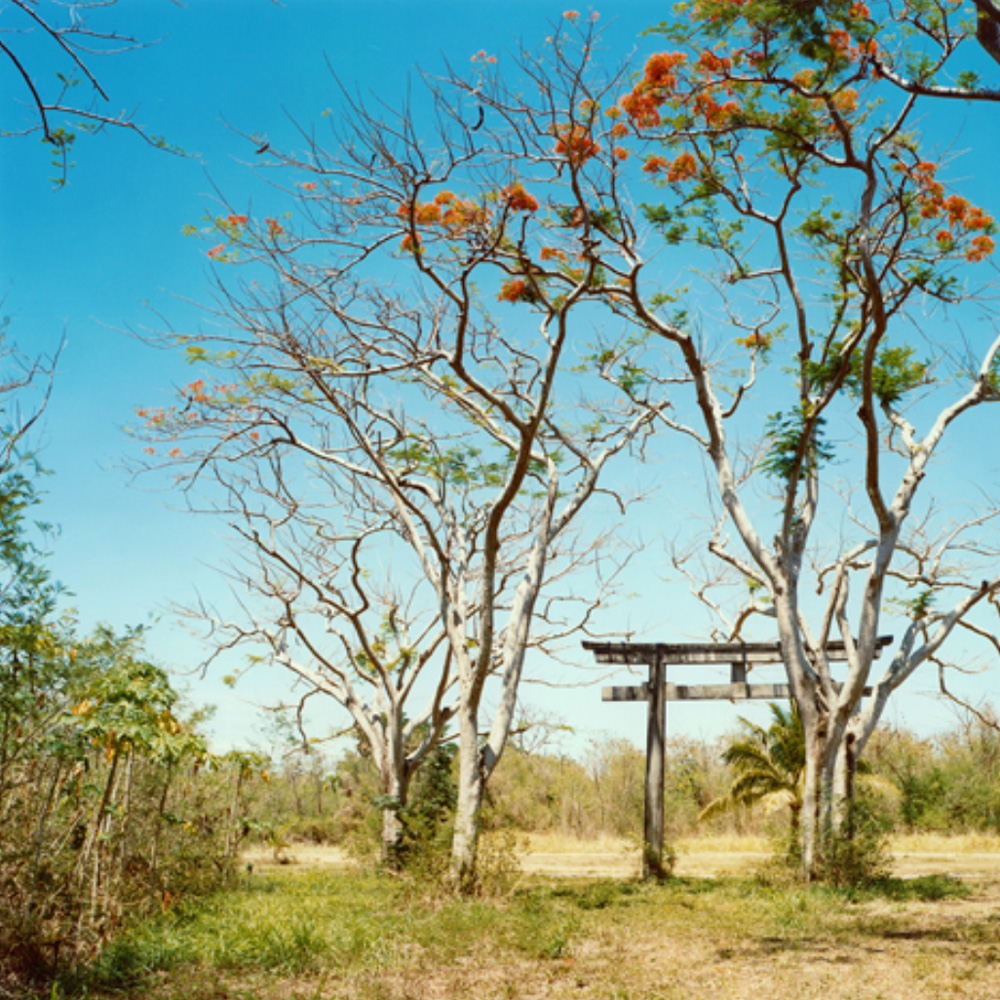2006 – 2012, 2017 –
とりい【鳥居】
神社の入り口に建てられた門。日本古来の宗教(的態度/慣習)である神道の聖域と人々が住む俗域を分ける境界でもある。明治時代から第二次大戦終結まで、神道は国家の管理の下、植民地主義に利用され、東アジアの各地に多くの神社/鳥居が建てられた。
Torii
A torii is a gate built at the entrance of a shrine. The gate demarcates the sacred precinct of Shintoism, which is Japan’s ancient religion (or religious attitude/custom), from the secular world in which people live. From the Meiji period (1868–1912) to the end of World War II, Shintoism was used under the colonialism of the Japanese government, and many shrines and torii were built across East Asia.
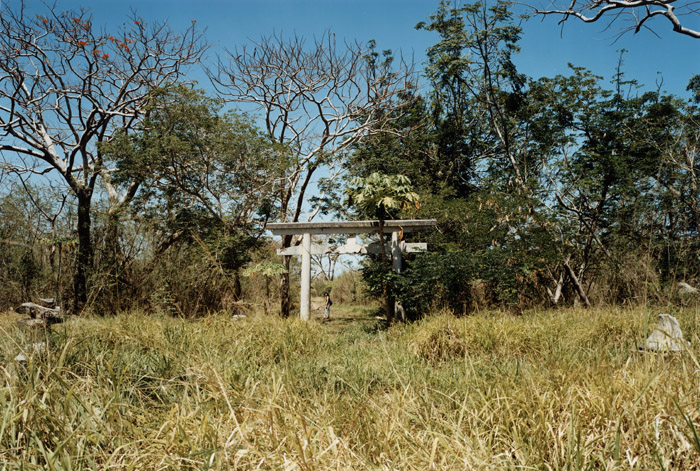
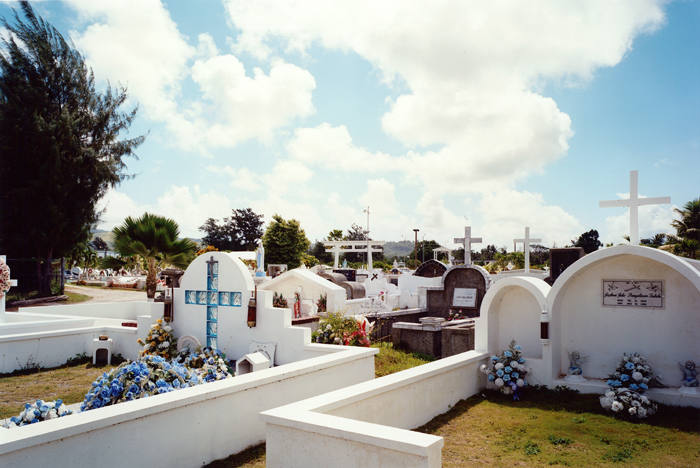
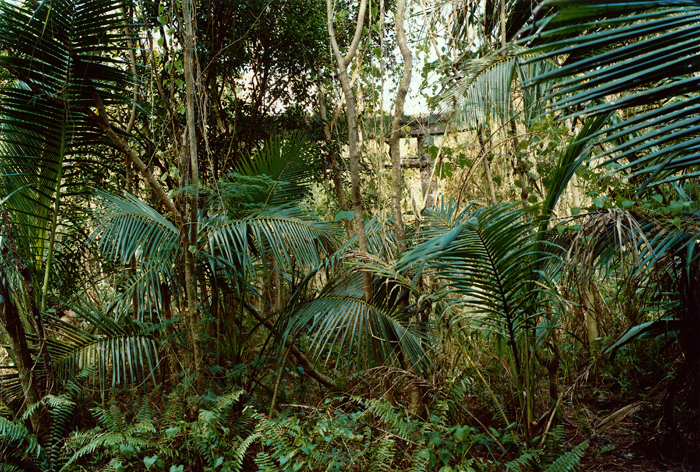
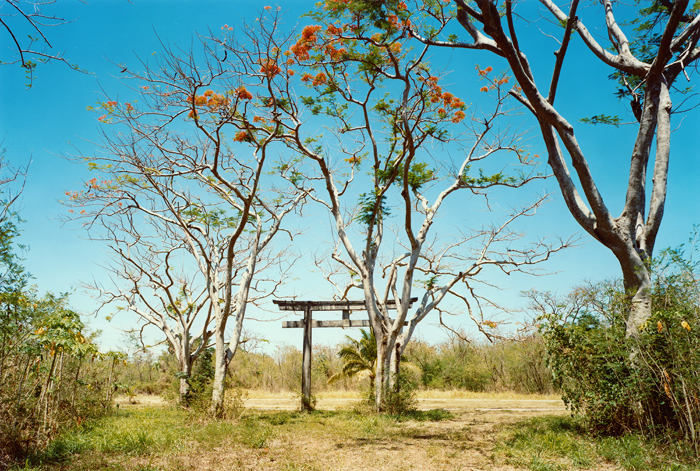
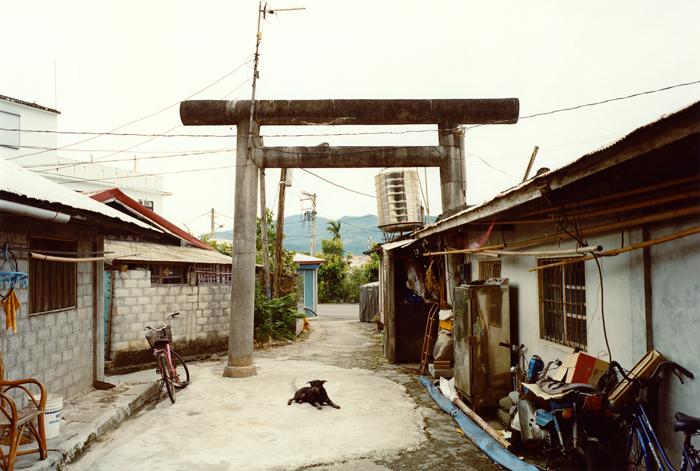
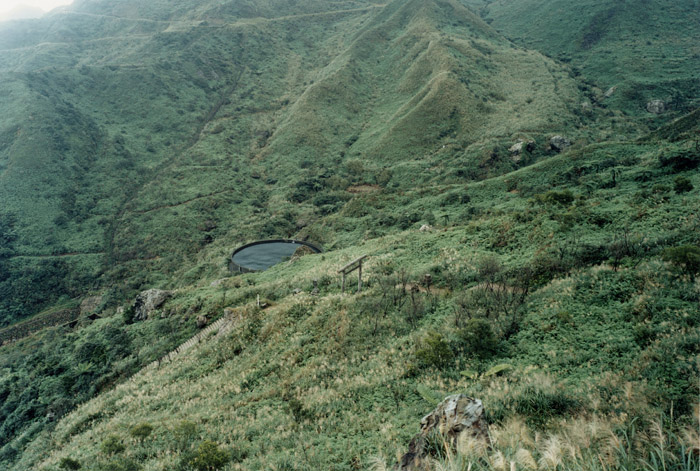

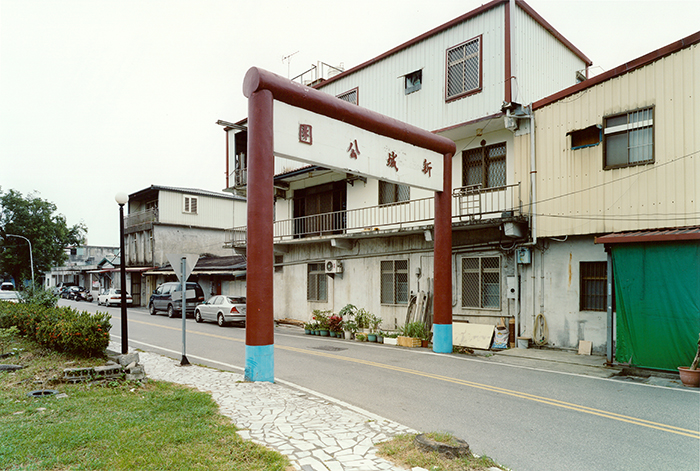

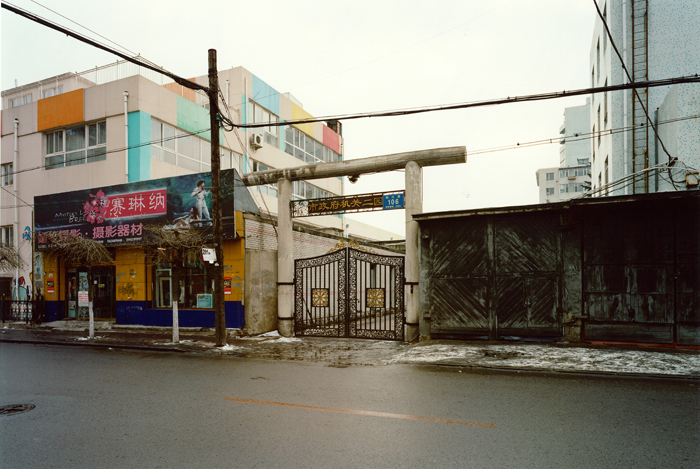

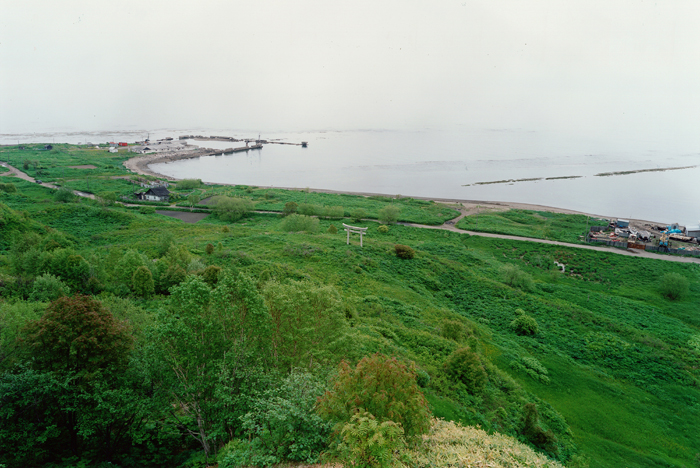
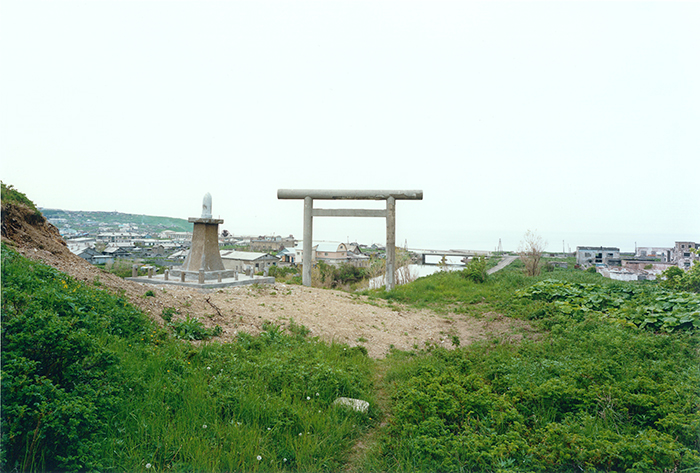
明治時代から第二次世界大戦終結まで、神道は国家の管理の下、植民地主義に利用され、東アジアの各地に多くの神社/鳥居が建てられた。
僕は、「戦争のかたち」(2001-2005)の国内の取材を 進める中で、韓国や台湾にも旧日本軍の遺構が残されていることを知った。そして、それらが戦後、どのように残されているか現状を調べ、取材を始めた。アメリカ領北マリアナ諸島パラオ共和国(旧南洋)、中国東北部(旧満州)、台湾、韓国、ロシア・サハリンなど。
現在の日本の国境線の外側に残された鳥居を調査し、現地へ赴き、撮影する。韓国にはもう残っていなかったし、台湾では、地面に横たわり人々のベンチになった鳥居を 見つけた。最終的に「戦争のかたち」に登場するような 旧軍事施設跡としてではなく、鳥居を“ 主人公”に写真作品としてまとめた。
2013年、このシリーズを写真集にまとめるために、 小さな出版社「ミチラボラトリー」を立ち上げ、以降書籍の発行・販売を自ら行うようになる。
From the Meiji era until the end of World War II, Shinto was used as a tool for colonialism at the hands of the Japanese state, which built shrines and torii gates all across East Asia.
Over the course of my domestic research for Remnants (2001 – 2005), I learned that many former Japanese military ruins still remain in Korea and Taiwan. I then began my investigations and interviews into what happened to them after the war, which led me to visit and photograph remaining torii gates outside of Japan’s present-day borders. I conducted this series in the Northern Mariana Islands (a U.S. territory), Northeastern China (former Manchuria), Taiwan, South Korea, and
Sakhalin (a Russian territory). While there are none left in Korea, I found a torii gate laid on its side and used as a park bench in Taiwan. I chose to present these torii gates as the main focus of my photographs rather than portray them as former military installations like the ruins that appear in Remnants.
In 2013, I started a small publishing company called “Michi Laboratory” to compile this series into a book of photographs, which I began to publish and sell.
・・・・・・・・・・・・・・・・・・・・・・・・・・・・・・
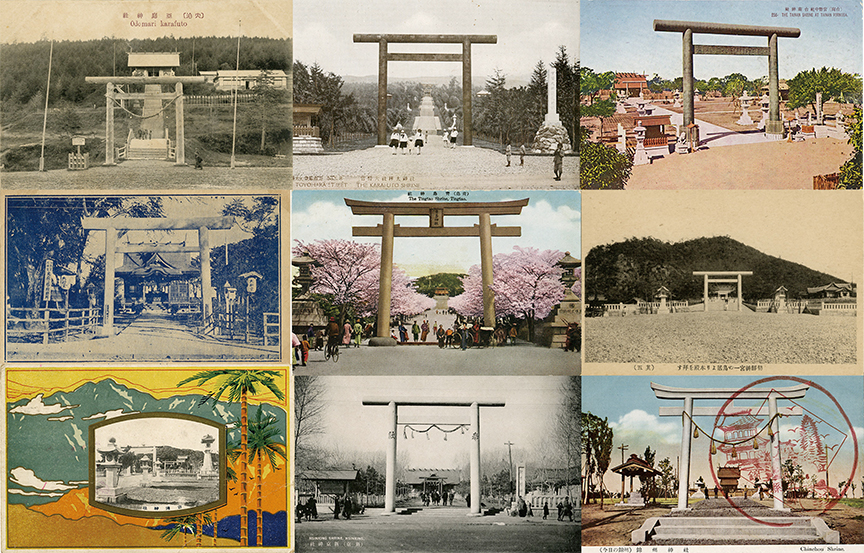
下道基行は、すでにそこにありながら私たちに見えていない「かたち」を見せてくれる。日本国内に残された砲台や戦闘機の格納庫などを訪ねた《戦争のかたち》(2001-2005年)では、それらが農家の倉庫として利用されていたり、別の用途を持って風景の中に埋もれていたりするのをみつけ、記録し伝えた。《Re-Fortプロジェクト》(2004年-)では、そうした戦争の遺構で缶蹴りや打ち上げ花火を行なうなど、機能を失った建物に別の機能を与えることで、過去と現在をつなぎ、共有されていない記憶と残されたかたちとを結びつけた。私たちが普段の生活の中で認識の外に置き、見ようとしていないことに対して、それが風景の中に溶け込み「かたち」として残されていることに気づかせるのである。
《torii》は下道が2006年から行なってきたプロジェクトで、現在の日本の国境線の外側にある鳥居を訪ね、撮影したものである。アメリカ領北マリアナ諸島(旧南洋)、中国東北部(旧満州)、台湾、韓国、ロシア・サハリンに建てられた日本の鳥居が戦後、それぞれの国の文化と生活の中で形状と用途を変えていることが示される。サイパン島では墓地にそのまま残されているが、韓国では壊されすでに存在していない。あるいは台中市では、地面に寝かされた状態で公園のベンチとして利用されている。神道における象徴的なかたちを持った鳥居がその象徴としての機能を失い、姿を変えながらそこにある。このように下道は、モニュメンタルなかたちが非モニュメンタルな別のものに変容し得ることに着目する。
鳥居は聖俗の境を表す結界、つまり「境界」でもある。下道の《torii》はまさに「境界」についての考察である。国境線の外にある鳥居の姿は、現在の国の歴史観や政情、文化の違いによって異なる様相を持つ。その違いは国という枠組、あるいは戦争という大きな出来事が関係する一方、人々の生活の中で徐々に変化したことによるものでもある。そこに生きている人々の間では、かつての大きな出来事は小さな出来事の集積の影で徐々に遠ざかる。小さな出来事の連鎖がいつの間にか、そこにある風景を変えていくのである。下道が取り上げる鳥居は、そのような大きな歴史と小さな個人史との両方の時間を内包している。彼はその風景を借り、目に見える/見えない、どこにもある/ない「境界」について考えさせる。私たち日本人は慣れていないばかりに国境線や領土、国家といった問題に神経質になり過ぎるか距離を置きがちだが、下道は果敢にその問題に取り組み、「日本」あるいは「日本人」という枠組に静かに揺さぶりをかける。そこから、政治的なイデオロギーや歴史的な客観性とは別の、相対的で流動的で個人的な境界線が見えてくる。
西川美穂子(東京都現代美術館学芸員)
「MOTアニュアル2012 Making Situations, Editing Landscapes 風が吹けば桶屋が儲かる」展(東京都現代美術館)カタログより改変
Motoyuki Shitamichi shows us “shapes” that are present but escape our notice. In Remnants (2001–2005), he discovered, recorded, and introduced old defensive structures in Japan, including gun emplacements and fighter aircraft hangars that constitute part of the landscape but are used for different purposes such as barns. In his Re-Fort Project (2004–), he has given new functions to these war relics (which no longer function as they were originally designed) by using them as venues for kick-the-can games or fireworks events. Through these activities, Shitamichi connects the past with the present, and links missing memories with the remaining structures. There are some things that pass unnoticed in our daily lives and that we avoid looking at: Shitamachi makes us aware that they have melted into the landscape but remain as shapes.
The Torii series is a project that Shitamichi has been working on since 2006. He has visited and photographed torii that are located outside Japan’s current national border. Torii were built in the Northern Mariana Islands (a U.S. territory), Northeast China (former Manchuria), Taiwan, South Korea, and Sakhalin (a Russian territory). His works show that, after the war, their shapes and uses have been changed to suit the local cultures and lifestyles in respective countries. In Saipan, torii remain intact at cemeteries; those in South Korea have been destroyed and no longer exist. In Taichung City, a torii is laid on its side and used as a park bench. Torii, which represent a symbolic shape in Shintoism, have lost their significance as symbols but remain in shapes different from their original forms. In this way, Shitamichi focuses on how symbolic shapes can be transformed into non-symbolic objects.
Torii are also considered as barriers (borders) to distinguish the sacred from the secular. Indeed, Shitamichi’s torii project is synonymous with his discussions about borders. Torii located outside Japan’s national border look different depending on the historical view, political situation, and culture of respective countries. The difference is attributed not only to the regime and large events such as war, but also to the gradual change in people’s daily lives. As life continues, memories of large events gradually fade due to the accumulation of small events. The consecution of small events transforms the landscape before people realize it. The torii that Shitamichi focuses on in this series encompass the time series in terms of both large historical events and small personal events. He borrows the landscape to provide the audience with opportunities to contemplate upon the visible/invisible, existent/nonexistent borders. In general, the Japanese people are too sensitive or try to distance themselves from issues regarding the national border, territory, and state, because they are not accustomed to focusing on such issues. Shitamichi boldly takes up these issues and quietly upsets the concept of “Japan” or “the Japanese people.” His works reveal relative, fluid, and personal borders that are different from those created by political ideologies or historical objectivity.
Mihoko Nishikawa (curator, Museum of Contemporary Art Tokyo)
Quoted from the catalog of MOT Annual 2012: Making Situations, Editing Landscapes (Museum of Contemporary Art Tokyo) (edited as necessary)
・・・・・・・・・・・・・・・・・・・・・・・・・・・・・・
[高松コンテンポラリーアート・アニュアルvol.07 ]
高松市美術館、香川
Takamatsu Art Museum, Kagawa Japan
2018
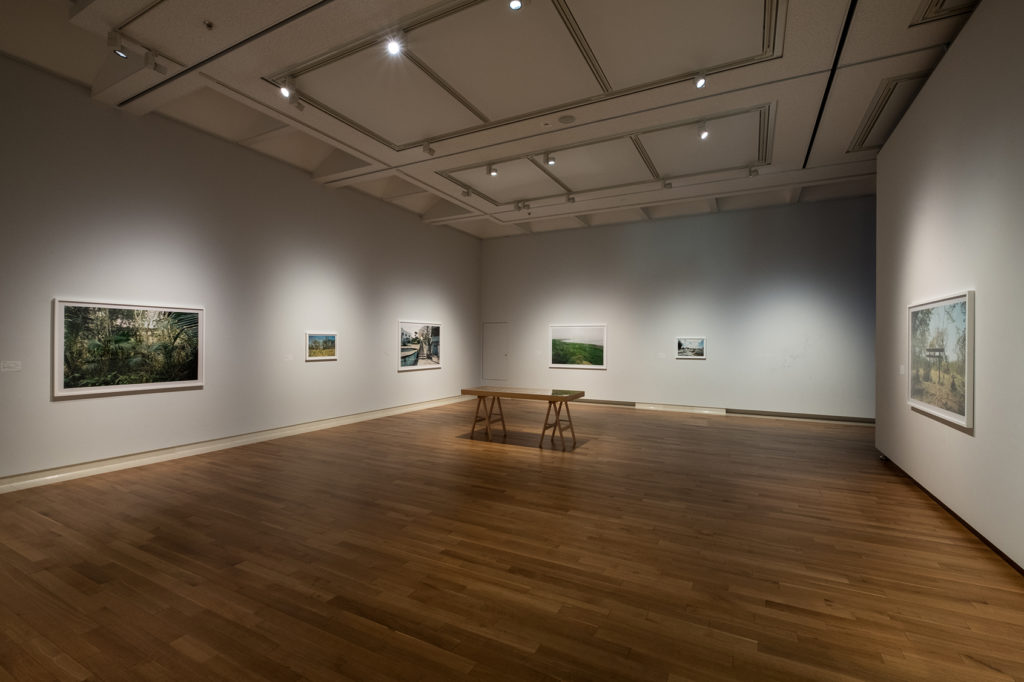
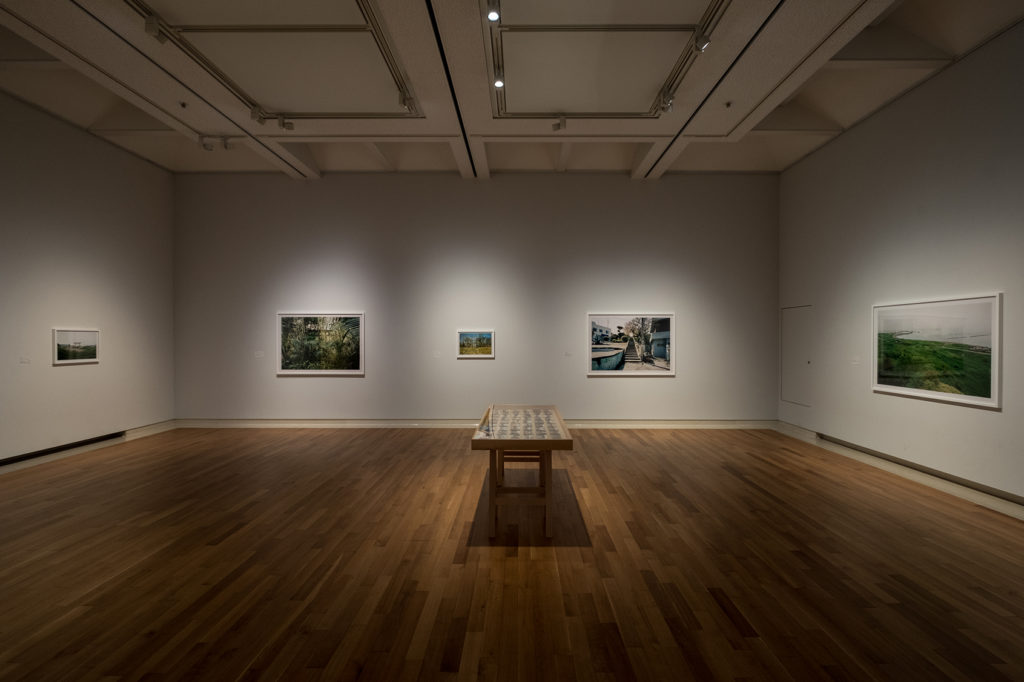
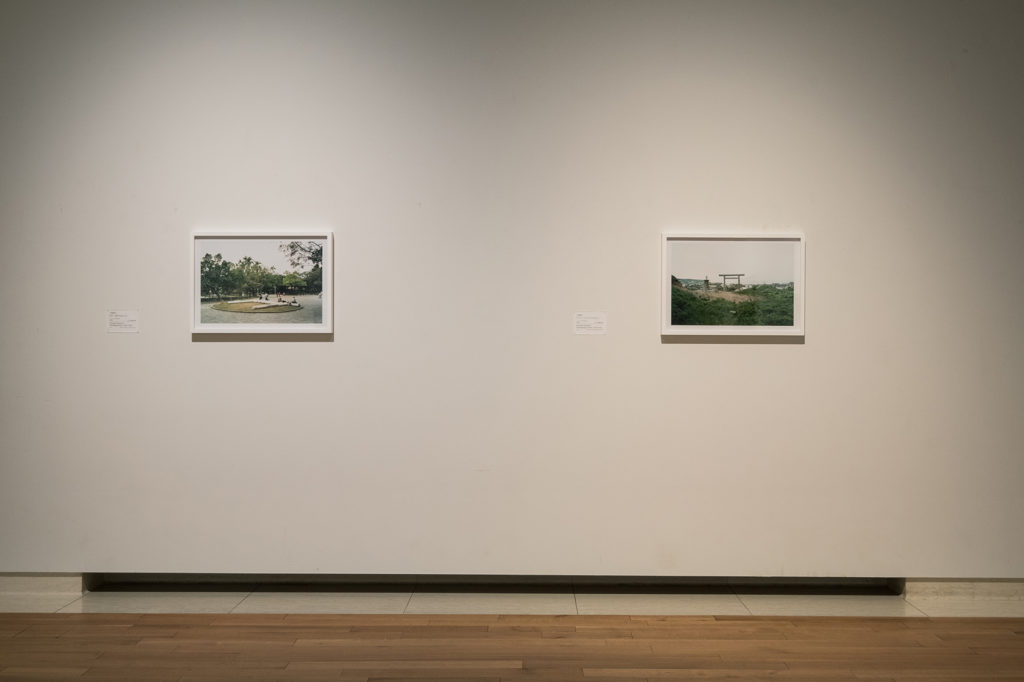
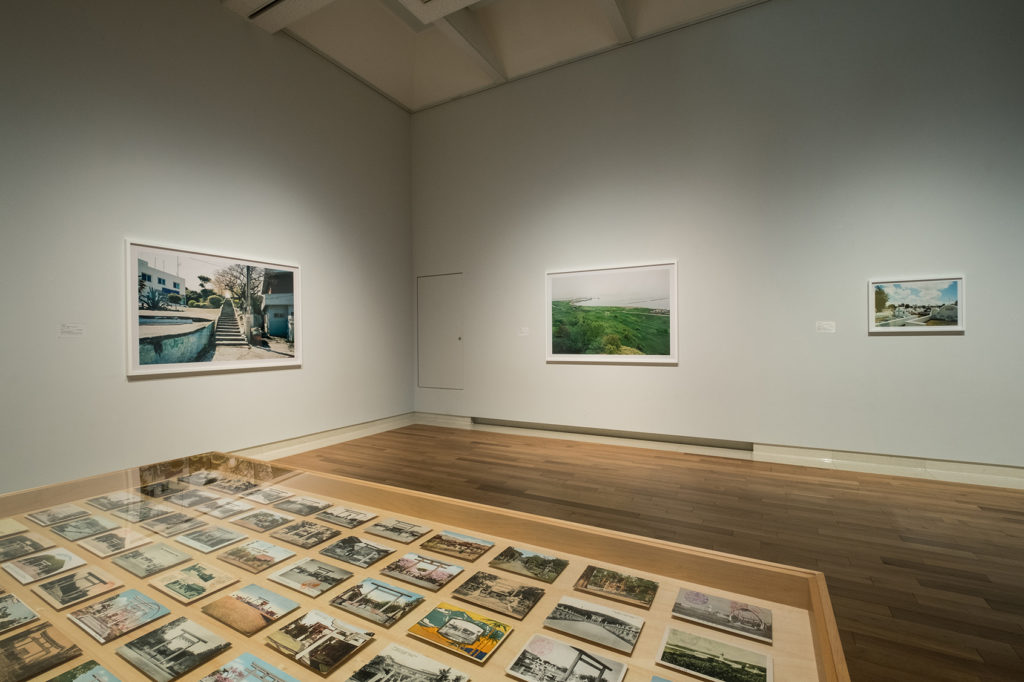
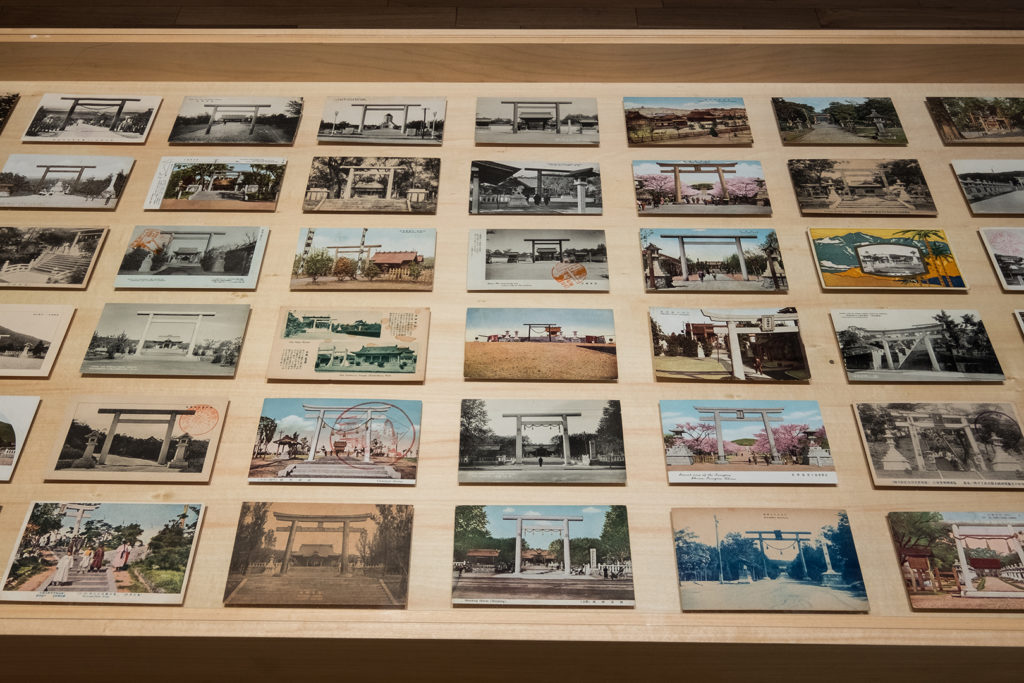
・・・・・・・・・・・・・・・・・・・・・・・・・・・・・・
写真集『torii』
photograph+text+figure: Moyoyuki Shitamichi
edit: Moyoyuki Shitamichi
design: So Hashizume
pages: 74p (28cm×22.5cm)
publishing company: michi laboratory
publication year: 2013
edition: 1000
写真/文章/編集:下道基行
装丁:橋詰宗
発行:ミチラボラトリー
発行日:2013年12月6日
28cm×22.5cm74ページ
価格: 3000円+税 (完売)
部数:1000部
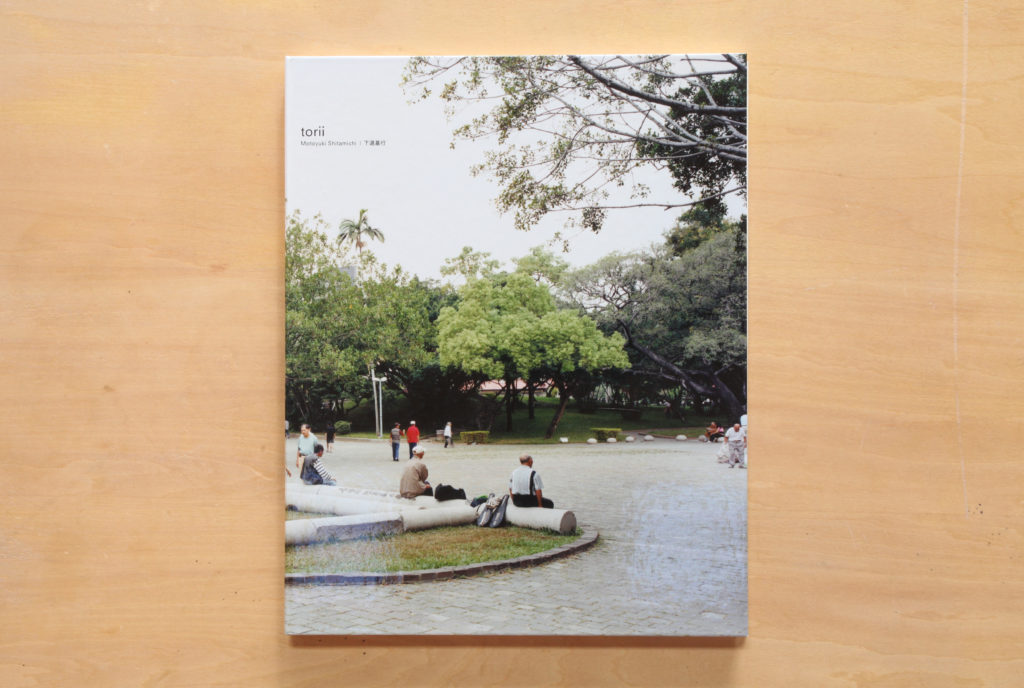
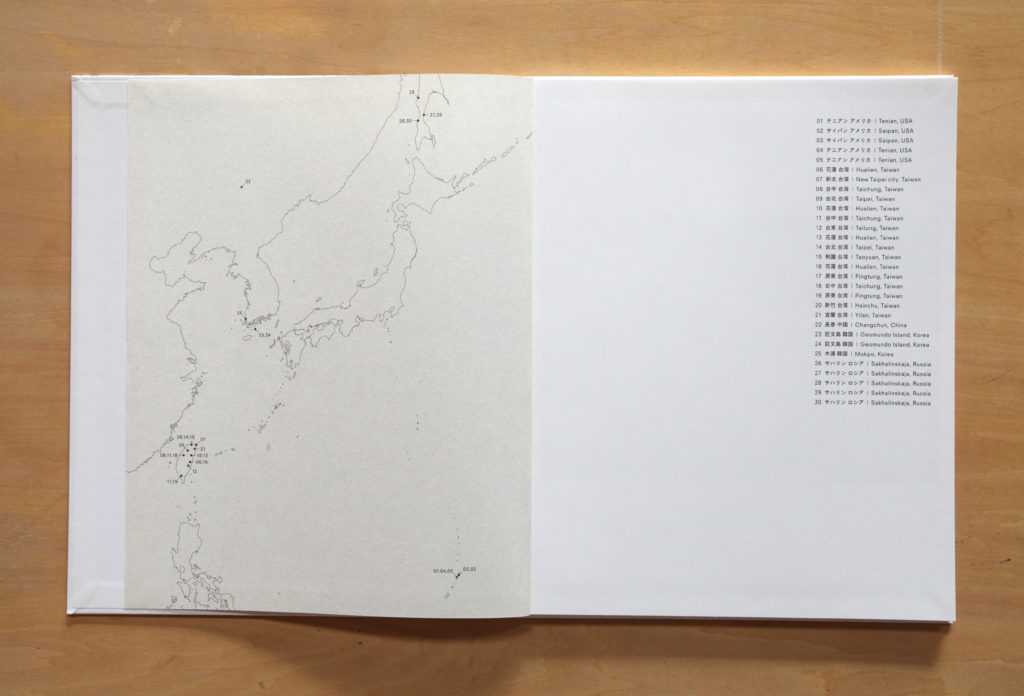
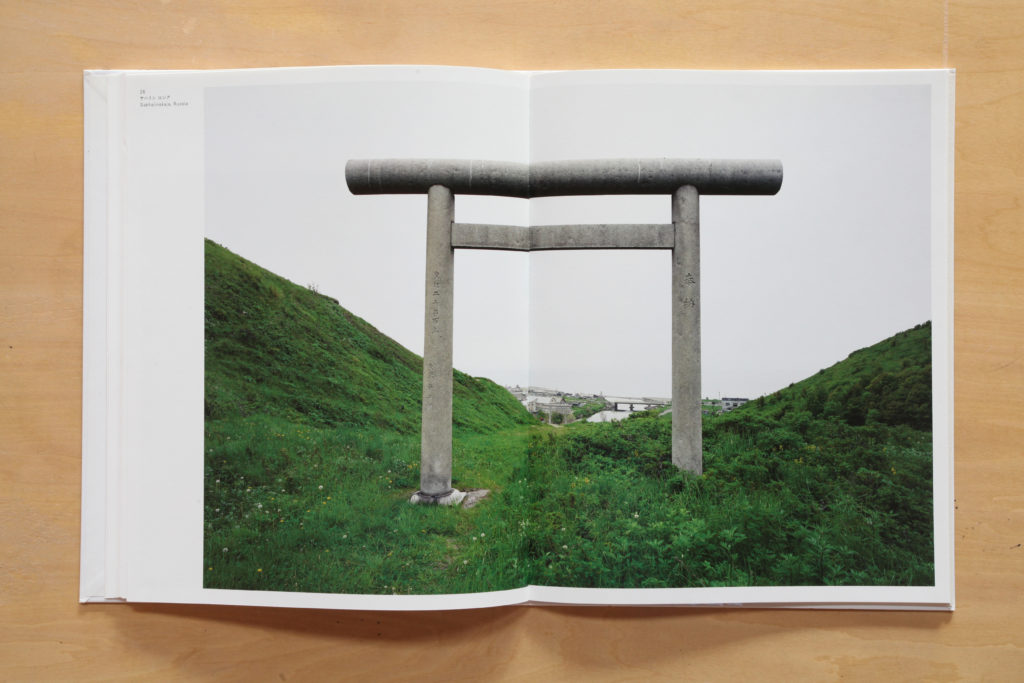
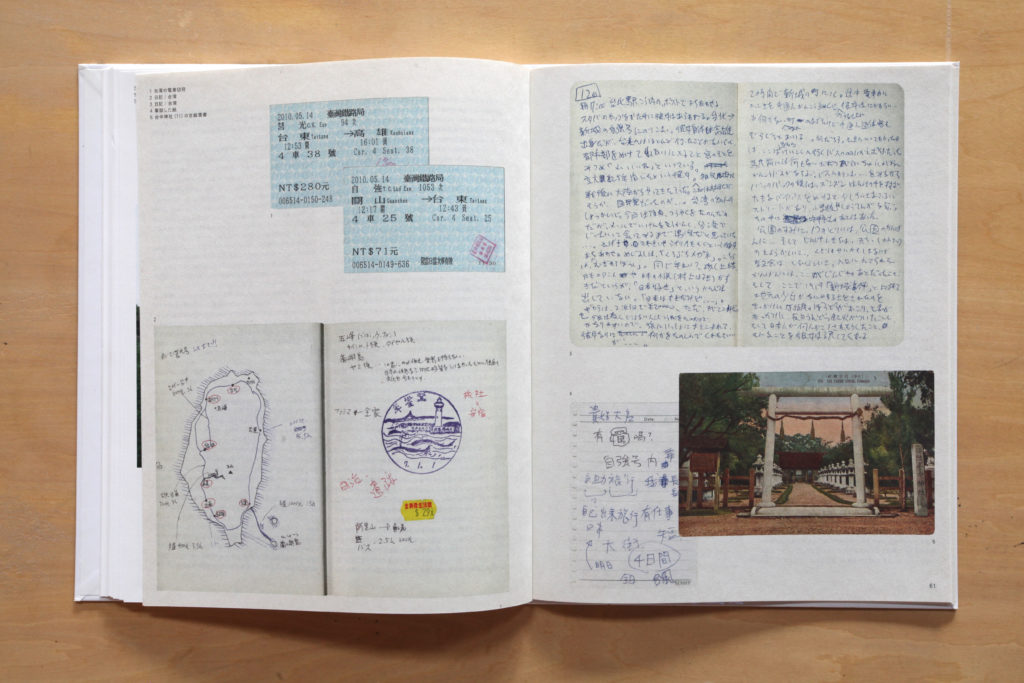
『下道基行 SHITAMICHI MOTOYUKI』
Author: SHITAMICHI Motoyuki
Essays: SHITAMICHI Motoyuki, KAMIYA Yukie, Doryun CHONG
Editors: SHITAMICHI Motoyuki, SHIBAHARA Satoko,Tokyo Arts and Space (KONDO Yuki, FUNABASHI Makiko,NAKAMURA Nami, HORIE Teruyo, YAMADA Eri)
Art Direction and Design: TANAKA Yoshihisa
Design: YAMADA Yutaro
Printing: iword Co., Ltd.
Published by Tokyo Arts and Space, Museum of Contemporary Art, Tokyo, Tokyo Metropolitan Foundation for History and Culture
Pages: 144
Publication Date: March 12, 2021
edition: 600
著者:下道基行
執筆:下道基行、神谷幸江、ドリュン・チョン
編集:下道基行、柴原聡子、トーキョーアーツアンドスペース(近藤由紀、舟橋牧子、中村菜美、堀江映予、山田絵里)
アートディレクション&デザイン:田中義久
デザイン:山田悠太朗
印刷:株式会社アイワード
発行:公益財団法人東京都歴史文化財団 東京都現代美術館 トーキョーアーツアンドスペース
144ページ
発行日:2021年3月12日
エディション: 600
価格:非売品
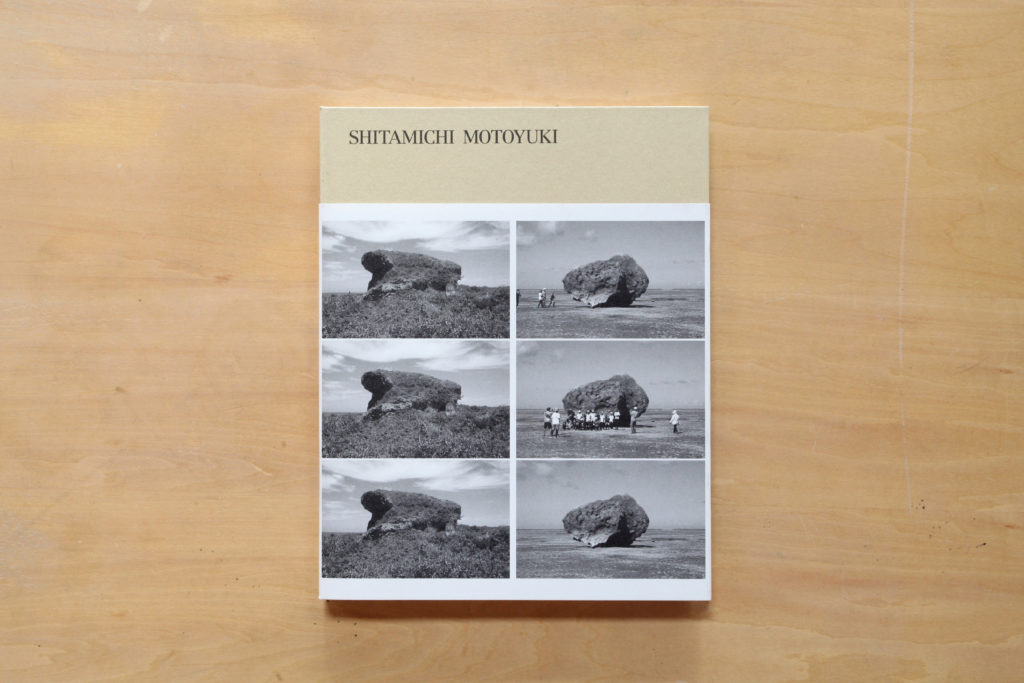
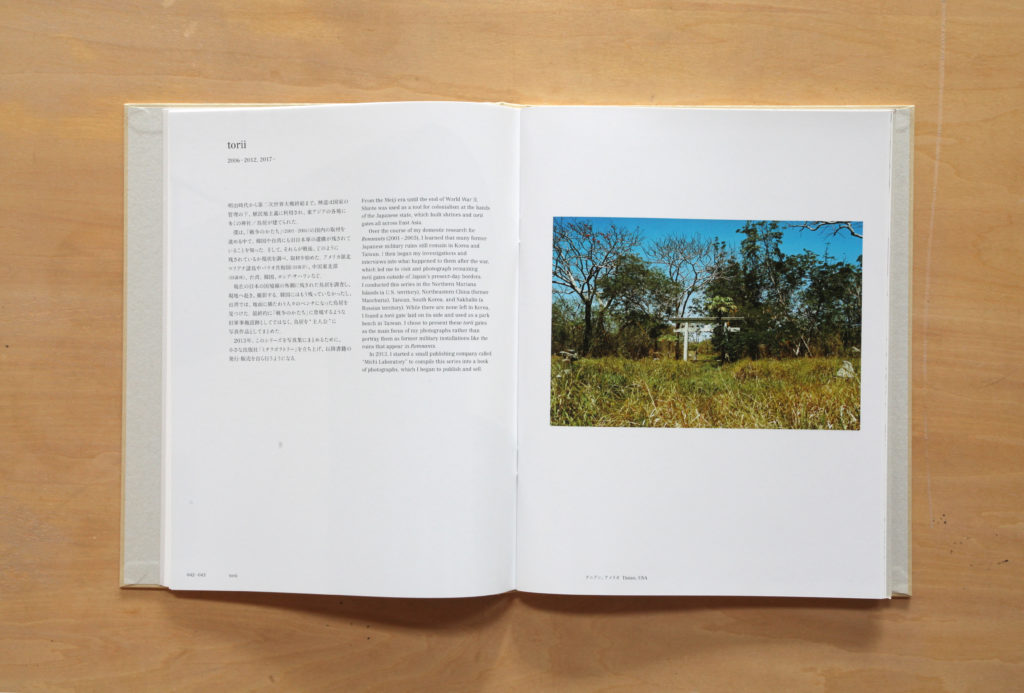
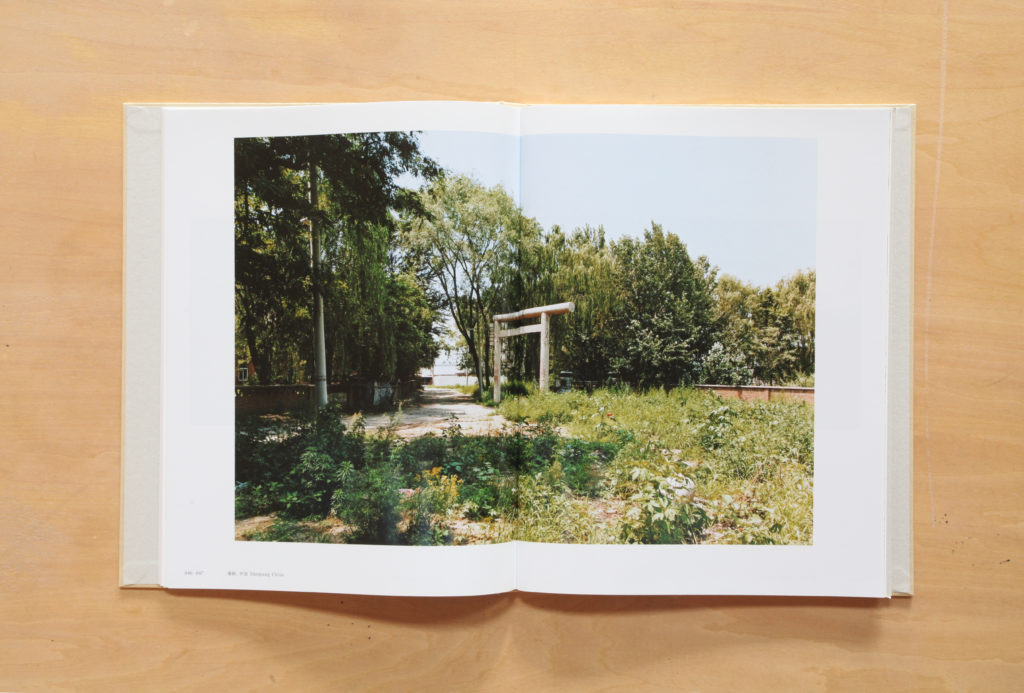
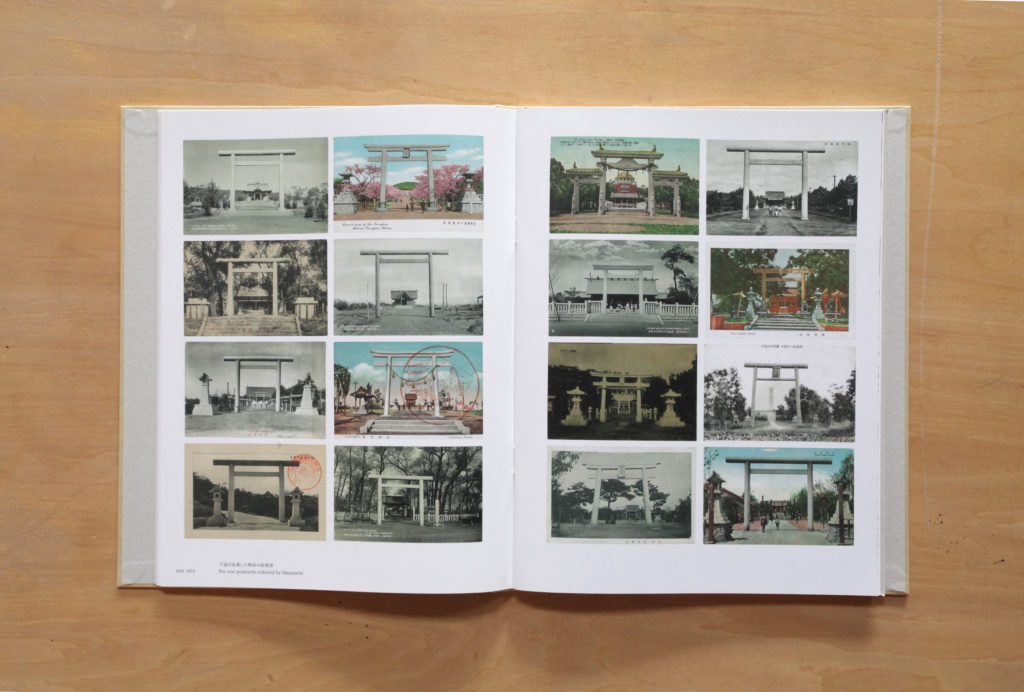
・・・・・・・・・・・・・・・・・・・・・・・・・・・・・・
作品タイトル:torii
制作年:2006-2012、2017-素材:タイプCプリント
サイズ:①1000×1500mm、② 508×610mm備考:4×5ネガフィルムで撮影した写真シリーズ
書籍:写真集『torii』(ミチラボラトリー、2013)、モノグラフ『下道基行』(TCAA、2019)
展示出品歴:
2019 PHOTOFAIRS Shangha「i Insights | Fieldwork」上海、中国
2019 「Intimate distance. Masterpieces from the Ishikawa Collection」MO.CO. Hôtel des collections、モンペリエ、フランス
2018 「Moving Stones」KADIST、パリ、フランス
2018 高松コンテンポラリーアート・アニュアルvol.07
「つながりかえる夏」高松市美術館、香川
2017 「Condition Report: ESCAPE from the SEA」国立美術館/アート・プリンティング・ワークス、クアラルンプール、マレーシア
2016 「Soil and Stones, Souls and Songs」現代美術デザイン美術館(MCAD)、マニラ、フィリピン/ The Jim Thompson Art Center、バンコク、タイ
2016 個展「下道基行展 風景に耳を澄ますこと」黒部市美術館、富山
2016 岡山芸術交流2016「開発」旧後楽館天神校舎跡地、岡山
2015 「他人の時間」東京都現代美術館、東京/国立国際美術館、大阪/シンガポール美術館、シンガポール/クイーンズランド 州立近代美術館、ブリスベン、オーストラリア
2015 第5回 I 氏賞受賞作家展「めぐりあう時間」岡山県立美術館、岡山
2015 「2015フォトシティさがみはら受賞作写真展」相模原市民ギャラリー、神奈川
2015 「Our Land / Alien Territory」Central Manege、モスクワ、ロシア
2015 「Beyond Hiroshima: The Return of the Repressed」 The Genia Schreiber University Art Gallery、
テルアビブ、イスラエル
2015 「MAMコレクション001:ふたつのアジア地図―小沢剛+下道基行」森美術館、東京
2014 第6回恵比寿映像祭「トゥルーカラーズ」東京都写真美術館、東京
2014 個展「下道基行―紙の仕事」Space Seed、岡山
2013 個展「torii」梅香堂、大阪
2012 「MOTアニュアル2012 風が吹けば桶屋が儲かる」東京都現代美術館、東京
2012 第9回光州ビエンナーレ「ROUND TABLE」光州、韓国 2011 「Living in an Out-of-Place」鳳甲美術館、台北、台湾 2008
個展「Fantome」エスパスジャポン、パリ、フランス
2008 「アトミックサンシャインの中へ 日本国平和憲法第九条下における戦後美術」THE PUFFIN ROOM、ニューヨーク、 アメリカ/代官山ヒルサイドフォーラム、東京/沖縄県立博物館・美術館、沖縄
2007 広島アートプロジェクト2007「金庫室のゲルトシャイサー」旧日本銀行広島支店、広島
Title: torii
Year: 2006 – 2012, 2017 –
Medium: Type C print
Dimensions: 1) 1000 x 1500 mm, 2) 508 x 610 mm Notes: Photography series taken by 4 x 5 negative film
Publications: Photo book ”torii”, Michi Laboratory, 2013
Exhibitions:
2019 PHOTOFAIRS Shanghai “Insights | Fieldwork,” Shanghai, China
2019 “Intimate distance. Masterpieces from the Ishikawa Collection,” MO.CO. Hôtel des collections, Montpellier, France
2018 “Moving Stones,” KADIST, Paris, France 2018 Takamatsu Contemporary Art Annual vol.07
“Connecting Returning Summer,” Takamatsu Art Museum, Takamatsu, Kagawa
2017 “Condition Report: ESCAPE from the SEA,” National Art Gallery / Art Printing Works, Kuala Lumpur, Malaysia
2016 “Soil and Stones, Souls and Songs,” Museum of Contemporary Art and Design (MCAD), Manila,
Philippines / The Jim Thompson Art Center, Bangkok, Thailand
2016 Solo Exhibition “Shitamichi Motoyuki – Open yourself to the landscape,” Kurobe City Art Museum, Toyama
2016 Okayama Art Summit 2016 “Development,” Korakukan Tenjin School, Okayama
2015 “TIME OF OTHERS,” Museum of Contemporary Art Tokyo, Tokyo / The National Museum of Art, Osaka, Osaka / Singapore Art Museum, Singapore / Gallery of Modern Art, Brisbane, Australia
2015 “The 5th Okayama Prefectural Mr. I Development of Rising Artists Award Exhibition,” Okayama Prefectural Museum of Art, Okayama
2015 “Photo City Sagamihara General Photography Festival Exhibition,” Sagamihara Citizen’s Gallery, Kanagawa
2015 “Our Land / Alien Territory,” Central Manege, Moscow, Russia
2015 “Beyond Hiroshima: The Return of the Repressed, Wartime Memory, Performativity and the
Documentary in Contemporary Japanese Photography and Video Art,” The Genia Schreiber University Art Gallery,Tel Aviv, Israel
2015 “MAM Collection 001: Two Asian Maps – Ozawa Tsuyoshi
+ Shitamichi Motoyuki,” Mori Art Museum, Tokyo 2014 Yebisu International Festival for Art & Alternative
Visions 2014 “TRUE COLORS,” Tokyo Metropolitan Museum of Photography, Tokyo
2014 Solo Exhibition, Space Seed, Okayama 2013 Solo Exhibition “torii,” BAIKADO, Osaka
2012 “MOT Annual 2012 Making Situations, Editing Landscapes,” Museum of Contemporary Art Tokyo, Tokyo
2012 The 9th Gwangju Biennale “ROUND TABLE,” Gwangju, South Korea
2011 “Living in an Out-of-Place,” Hong-Gah Museum, Taipei, Taiwan
2008 Solo Exhibition “Fantome” Espace Japon, Paris, France 2008 “Into the Atomic Sunshine – Post-War Art under Japanese Peace Constitution Article 9,” THE PUFFIN ROOM, New York, USA / Daikanyama Hillside Forum,
Tokyo / Okinawa Prefectural Museum and Art Museum, Okinawa
2007 Hiroshima Art Project 2007 “Geldscheisser in the Vault,” The Former Hiroshima Branch of the Bank of Japan, Hiroshima
